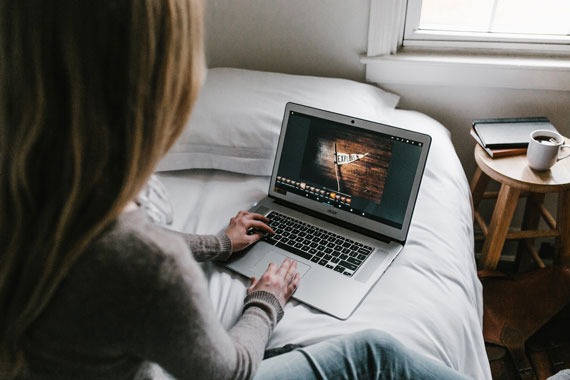Feeling stagnant in your photography and photo editing journey? Mark Denney recommends you try this one exercise to truly test how far you’ve come. You may be surprised by the difference and the number of skills you’ve accumulated along the way! All you need is an old edited photo to compare and an unedited version to use for the test.

Step 1: Beginner Edit Review
Sometimes, all you need to do is look at an old edited image to see how far you’ve progressed. As a pro, it’ll be easier than ever to recognize slight missteps, including over-blown exposure and the overuse of effects. Pull out that exact old shot — ideally from the beginning of your photography or editing journey — then review it.
In Mark’s case, he’s chosen a photograph of a tree taken on his in-law’s farm in Illinois. Supposedly shot at sunrise or sunset, it features a pink, cloudy sky. At first glance, Mark can already pick up the issues and rookie mistakes he made. Mainly:
One of the very first things that really jumps out at me is this really strong magenta color cast… And, of course, it’s definitely too sharp. It looks like I added a ton of clarity, quite a bit of texture, and probably a little bit of sharpening… It also looks extremely contrasty, as well….
Step 2: Pro Edit Test
Now that you’ve isolated the main issues with your beginner-level edits, it’s time to correct them. Use the .RAW file or an unedited version of your image, not your edited image, for the test. Ultimately, being a pro comes down to knowing more of your editing software tools in-depth.
Being able to fix issues more quickly, easily, and effectively is a sure sign that you’ve grown a lot. In this case, Mark’s tree image poses two serious issues. One, the subject — a rather spindly tree — is underexposed. Two, it’s very difficult to mask.
Marks’ fix: to adjust the exposure for a difficult-to-mask image featuring a dark subject and bright background, use the Linear Gradient tool:
- Draw a solid masked gradient all the way across your entire image, then click the … in the menu.
- Next, choose Intersect Mask with from the drop-down menu, then Luminance Range.
- Finally, drag the luminance range slider from the right to the left until only your dark subject is masked accurately.
- Now, you can adjust its exposure cleanly without overblowing the sky or backlighting!
Step 3: Image Comparison
After you’re done editing your image, you can compare both photographs. Line them up side-by-side in Lightroom (or whichever editing software you’re using). You should be able to preview both next to each other without any background or menus interfering. You’ll probably be amazed by the difference — and impressed with your prowess.

Photo captured by Andrew Neel
Ultimately, what differentiates a pro-edited photograph from a less-experienced edit is subtlety and accuracy. A light touch is key, as is maintaining as much detail as possible. Try zooming in, as well — ideally to around 300%. Amateurishly-edited photographs will generally include artifacts that make them unsuitable for submission to premium stock sites.
Wrapping Up
Editing is an optional aspect of photography that some photographers rely on while others completely avoid. Though not 100% a necessity, knowing how to edit images can help salvage them or level up your craft.
Everyone has got to start somewhere. If you haven’t done so yet, now may be the time to start. Alternatively, if you have but feel like you’ve plateaued, then do try out Mark’s exercise! Put yourself to the test to see if you’re actually much better than you think.
Like This Article?
Don't Miss The Next One!
Join over 100,000 photographers of all experience levels who receive our free photography tips and articles to stay current:





